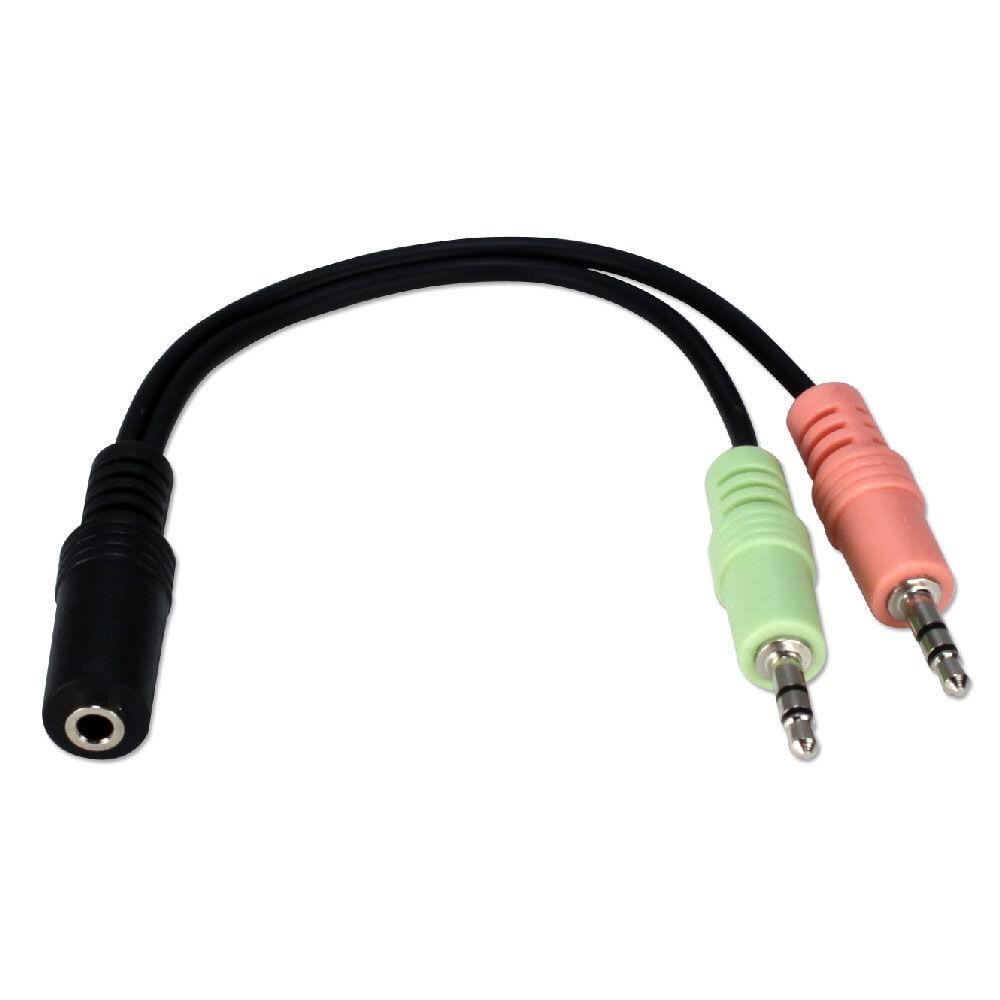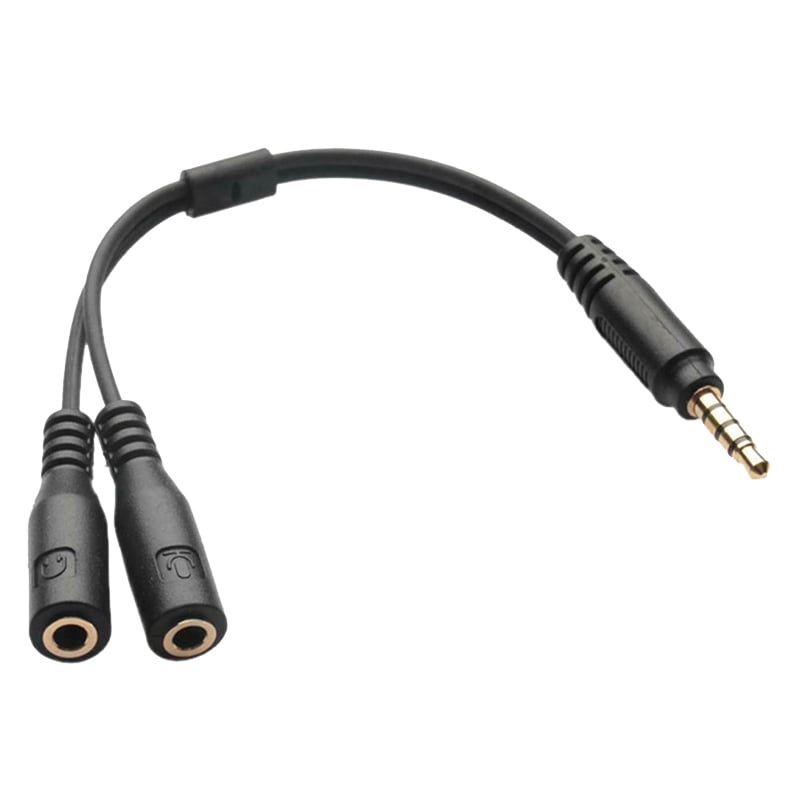

Western Electric was the manufacturing arm of the Bell System, and thus originated or refined most of the engineering designs, including the telephone jacks and plugs which were later adopted by other industries, including the U.S. It is today still used on mainstream musical equipment, especially on electric guitars. Clausen received a patent on an improved design. The current form of the switchboard-plug was patented prior to 1902, when Henry P. Patents 262,701, 305,021, and 489,570 relating to an improved design that more closely resembles the modern plug. Scribner was issued US Patent 293,198 for a "jack-knife" connector that is the origin of calling the receptacle a "jack". The 1877 switchboard was last known to be located in the lobby of 185 Franklin Street, Boston.
#Audio splitter mic and headphone to just headphone manual
or 1878, when an early switchboard was used for the first commercial manual telephone exchange in New Haven, Connecticut created by George W.

The original 1⁄ 4 inch (6.35 mm) version descends from as early as 1877, when the first-ever telephone switchboard was installed at 109 Court Street in Boston in a building owned by Charles Williams, Jr. Modern phone connectors are available in three standard sizes. The 3.5 mm connector is, however, sometimes-but counter to the connector manufacturers' nomenclature -referred to as mini phono. Phone plugs and jacks are different from phono plugs and phono jacks (or in the UK, phono socket) which are RCA connectors common in consumer hi-fi and audiovisual equipment. The terms phone plug and phone jack sometimes refer to different genders of phone connectors, but also sometimes refer to the RJ11 and older telephone plugs and corresponding jacks that connect wired telephones to wall outlets. In the US, a stationary (more fixed) electrical connector is the jack. In the UK, jack plug and jack socket are the male and female phone connectors. The 3.5 mm versions are mini-phone, mini-stereo, mini jack, etc. stereo plug, headphone jack, microphone jack, aux input, etc. Specific models, and connectors used in specific applications, may be termed e.g. The "mini" connector has a length of 14 millimetres (0.55 in). The "mini" connector has a diameter of 3.5 mm (0.14 in) and the "sub-mini" connector has a diameter of 2.5 mm (0.098 in). The outside diameter of the "sleeve" conductor is 6.35 millimetres ( 1⁄ 4 inch). Similarly, two-, four- and five-contact versions are called TS, TRRS and TRRRS connectors respectively. Ring contacts are typically the same diameter as the sleeve, the long shank. Three-contact versions are known as TRS connectors ( tip, ring, sleeve).

In its original audio configuration, it typically has two, three, four or, occasionally, five contacts. The phone connector is cylindrical in shape, with a grooved tip to retain it. The phone connector was invented for use in telephone switchboards in the 19th century and is still widely used. A plug, the "male" connector, is inserted into the jack, the "female" connector. Inserting the plug connects its tip to one part of that circuit instead.Ī phone connector, also known as phone jack, audio jack, headphone jack or jack plug, is a family of electrical connectors typically used for analog audio signals. When the plug is removed, those contacts close to connect a circuit such a connection is said to be "normal". Note the flat open contact spring parallel to and inside the tip contact spring. TRS connectors have three parts: tip, ring and sleeve A pair of phone connectors: A plug (right) is inserted in a socket (jack, left). The tip is insulated from its adjacent sleeve and body. ( Learn how and when to remove this template message)Ī 6.35 mm ( 1⁄ 4 inch) two-contact phone plug used for various signals including electric guitar, loudspeaker, microphone and line-level audio. ( November 2022) ( Learn how and when to remove this template message) Unreliable citations may be challenged or deleted. Please help this article by looking for better, more reliable sources. Some of this article's listed sources may not be reliable.


 0 kommentar(er)
0 kommentar(er)
